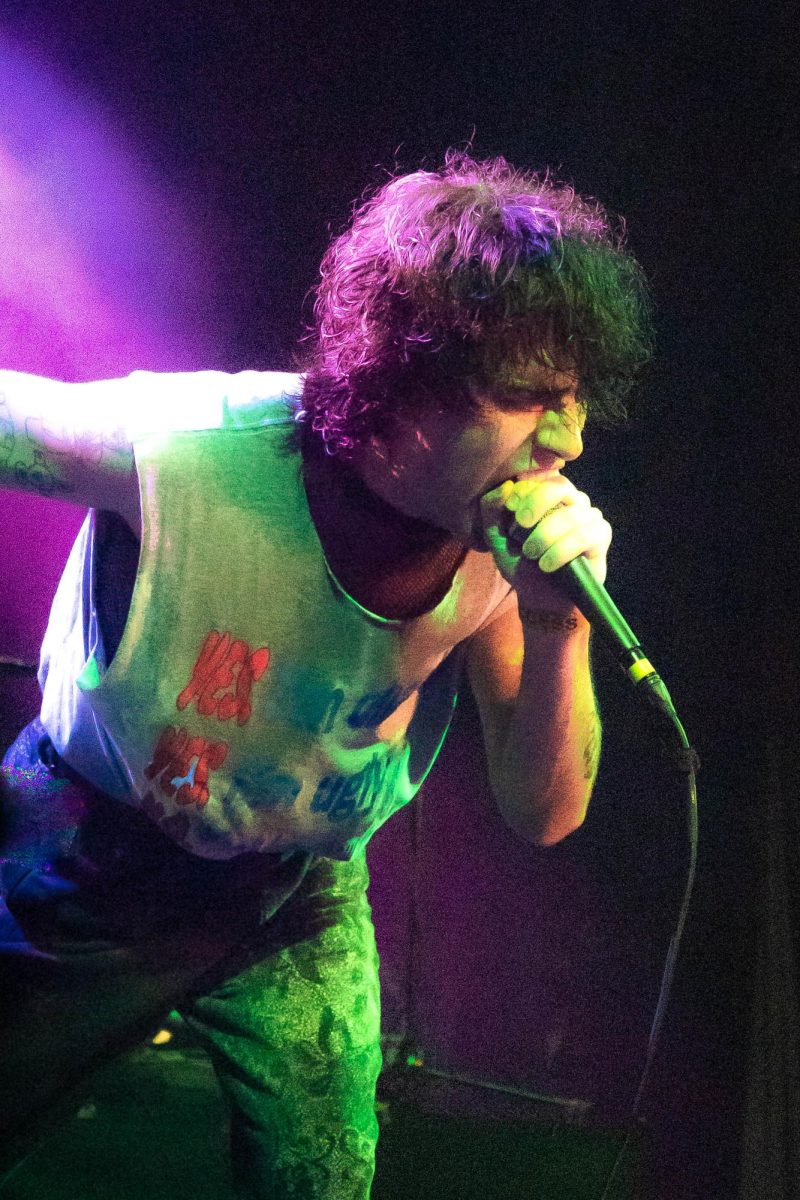__gallery.jpg)
Courtesy of The McNay Museum
Photos Courtesy of The McNay Museum
Simple geometric shapes paired with bold, brightly colored words and numbers characterize many of the works in “Robert Indiana: Beyond LOVE,” currently on display at the McNay Art Museum.
Organized by the Whitney Museum of American Art in New York, San Antonio’s exhibition of “Beyond LOVE” is a homecoming of sorts. The McNay is the only other venue in the nation to host the exhibition, and is bringing Indiana back for a second time. Indiana’s first appearance at the McNay was in 1968, which coincided with his now iconic poster art for San Antonio’s Hemisfair Park.
Indiana, who was born Robert Clark, lived in many different foster homes in Indiana throughout the Depression. Early in his career he decided to pay homage to his home state and later adopted Indiana as his surname.
Indiana, perhaps best known for his 1966 LOVE painting, is often associated with the Pop Art movement popularized by artists such as Andy Warhol and Roy Lichtenstein. Eschewing the label of Pop Artist, Indiana refers to himself in his biography as an “American painter of signs.”
Inspired by the primitive signs along America’s highways in the 50s and 60s, Indiana began incorporating the images into his artwork, painting simple words as such “Eat” and “Die” onto large canvases.
In an interview with Arthur Carr in 1965, Indiana said “’Eat’ was the last word that my mother said before she died. And the whole ‘Eat/Die’ diptych series of paintings is related to that one specific experience.”
The “Eat/Die” theme is a recurring element in his paintings, along with “Hug” and “Err.” According to one label in the exhibit, the four words refer to “survival, existence, sin and love” and appear frequently in his work.
The McNay exhibit showcases more than 100 paintings, sculptures and drawings from public and private collections from around the world, placing Indiana’s work into a broader perspective by presenting the artist’s full range of work over the course of five decades.
According to René Paul Barilleaux, chief curator for the McNay, the exhibit is “loosely chronological. The first gallery shows his early works, and from there it’s thematic.”
Though it may be hard to avoid the iconic LOVE image, which appears as both a painting and a sculpture in the McNay exhibit, visitors will be treated to Indiana’s other, often controversial, artwork.
The Confederacy series debuted at the same time Indiana introduced his LOVE series in 1966. According to Barbara Haskell, curator of New York’s Whitney Museum of American Art, Indiana “envisioned the (Confederacy) series as a group of paintings that would identify the states that seceded from the Union during the Civil War. It was really about civil rights.”
The controversy over the Confederacy series stems from the legend stenciled on the painting: “Just as in the anatomy of man, every nation must have its hind part.” Haskell points out, “The legend is so blunt and politically strong – one of the most blunt accusations that anyone has made in 1960’s political art.”
Though the Confederacy series depicts four states – Louisiana, Mississippi, Florida and Alabama – that seceded, the McNay exhibit displays only three; the Alabama painting is currently on loan to another exhibit.
In addition to Indiana’s paintings are his herm sculptures, which are totems made of scrap wood reclaimed from rundown buildings. The totems were fashioned after hermae, stone pillars used as boundary markers along the roads of ancient Greece. Atop the pillars sat a carved head or bust of the Greek god Hermes.
The hermae were reinvented in the hands of Indiana with simple words stenciled on the pillar faces and metal wheels attached at the bottom to mimic Hermes winged feet.
In addition to “Beyond LOVE,” the McNay honors Robert Indiana and his work with two complementary exhibitions: “Robert Indiana: The Mother of Us All,” and “Robert Indiana’s Hartley Elegies.”
The McNay Art Museum’s exhibit of “Robert Indiana: Beyond LOVE” runs through May 25. Admission to the McNay ranges from $10 to $15 for adults and $5 to $12 for students, seniors and active military. Admission is free for McNay members, children 12 and under and on Thursdays from 4 p.m. to 9 p.m.
For more information and museum hours, visit mcnayart.org.











